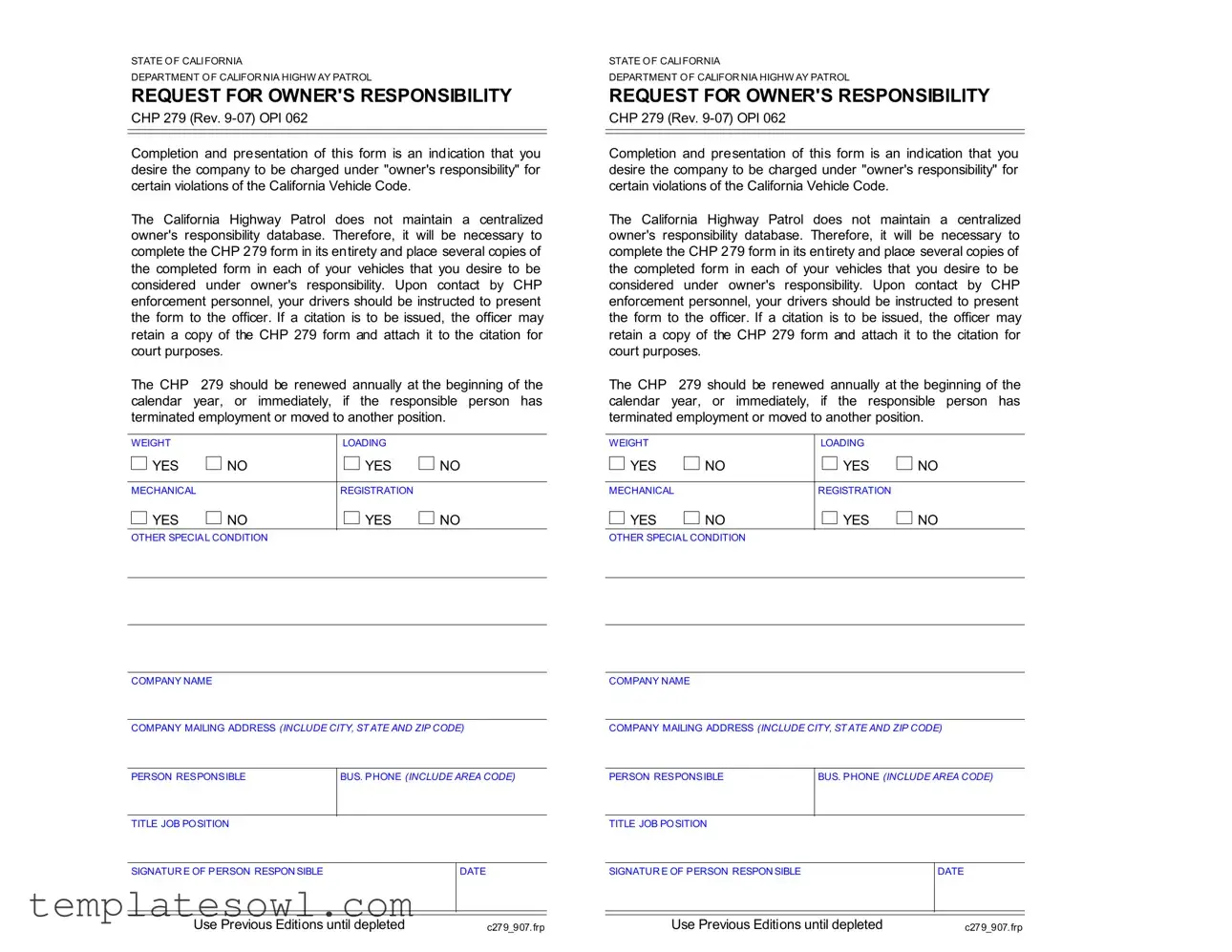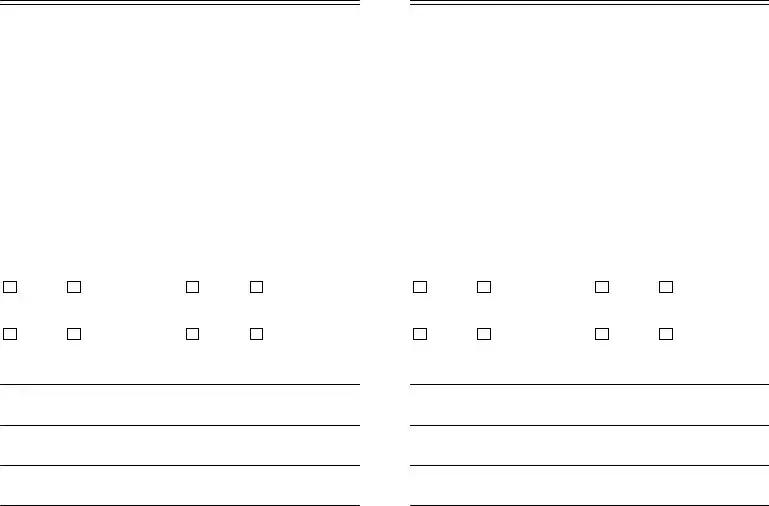What is the purpose of the CHP 279 form?
The CHP 279 form serves as a request for the California Highway Patrol (CHP) to recognize a company under "owner's responsibility" for specific violations of the California Vehicle Code. By completing this form, a company indicates its desire to assume accountability for certain infractions that may occur under its ownership during operations.
Who should complete the CHP 279 form?
The form should be completed by an individual within the company who is designated as responsible for vehicle operations. This person typically holds a title indicating managerial or operational authority, such as a fleet manager or administrator. Their signature on the form signifies their commitment to the responsibilities outlined.
Where should copies of the completed CHP 279 form be kept?
Once the CHP 279 form is filled out, several copies should be placed in each vehicle that the company wishes to cover under owner’s responsibility. Keeping these copies easily accessible ensures that drivers can promptly present them to law enforcement if needed.
What should drivers do if approached by CHP enforcement personnel?
Drivers should be instructed to present the CHP 279 form to any enforcement personnel who approach them. This act demonstrates the company's intention to take responsibility for any potential violations and helps establish clear communication about accountability to the officer.
What happens if a citation is issued?
If a CHP officer issues a citation, the officer may keep one copy of the CHP 279 form to attach it to the citation for court purposes. This helps connect the citation directly to the owner's responsibility assertion made by the company, providing appropriate documentation if the matter escalates to court.
How often should the CHP 279 form be renewed?
The CHP 279 form should be renewed annually, typically at the start of each calendar year. However, it is also necessary to update the form immediately if the responsible person leaves the company or changes positions. Keeping the form up-to-date ensures that the company remains compliant with regulations and properly documented.
What information is required on the CHP 279 form?
The form requires essential information, including the company name, mailing address, the name of the responsible person, their business phone number, title, and signature. Additionally, the form includes sections to indicate specific conditions such as weight loading and mechanical registration, which need to be completed as applicable.
Is there a centralized database for owner's responsibility?
No, the California Highway Patrol does not maintain a centralized owner's responsibility database. Due to this limitation, it is crucial for companies to keep their completed CHP 279 forms readily available in each vehicle to avoid misunderstandings during traffic stops or inspections.

